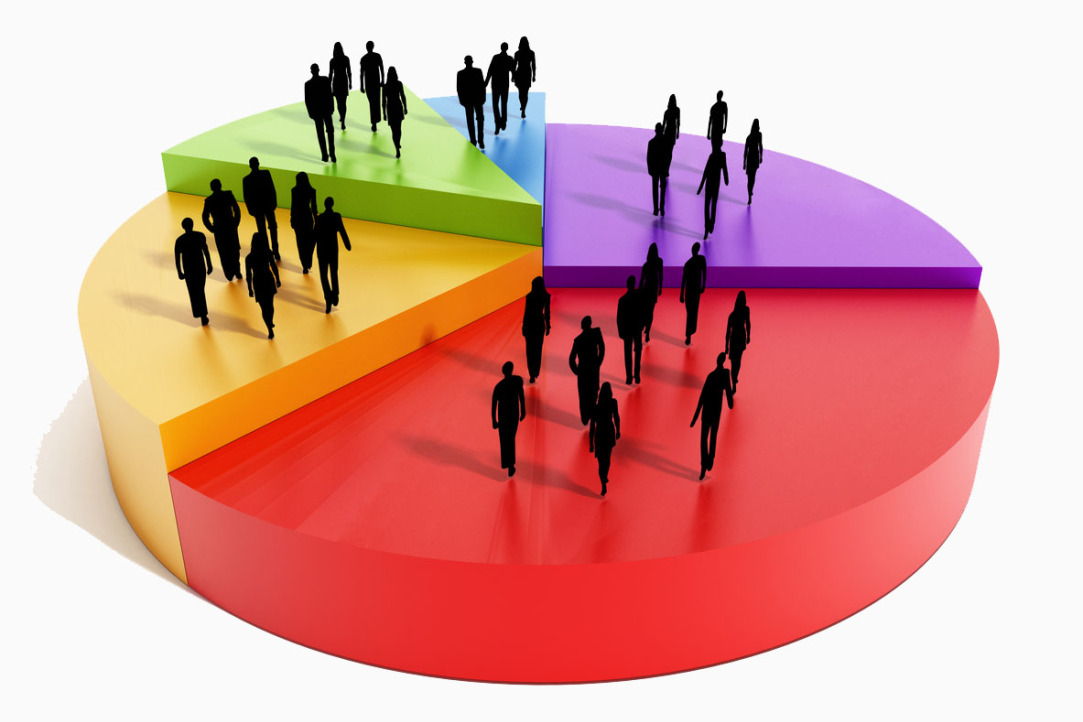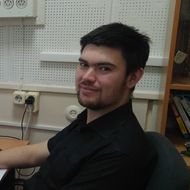HSE Researchers Prove the Existence of Nash Equilibrium for a New Class of Problems in Game Theory

Researchers at HSE University's St Petersburg School of Economics and Management have been exploring methods for the efficient allocation of resources in systems involving multiple players. The scientists have proven the existence of strategies for optimal decision-making in competition for limited, discrete resources in four different cases. The developed mathematical model can be applied in various fields, ranging from education and medicine to managing networks and computing power. The paper has been published in Games and Economic Behaviour.
There is ongoing competition for various resources in the world, and individuals must choose the optimal strategy to acquire them. Prospective students must choose which school to apply to, companies compete for the best projects, and gym-goers rush to claim an available machine.
Scientists strive to find methods that help systems with many participants operate efficiently, avoiding overloads and the irrational use of resources. These problems can be translated into a mathematical model where agents make decisions based on potential benefits, available resources, and their capabilities. In game theory, such models are analysed through the lens of Nash equilibrium—a state where no participant wishes to change their choice, as doing so would not lead to increased benefits.
Researchers at HSE University's St Petersburg School of Economics and Management have proven the existence of Nash equilibrium in certain types of games involving indivisible (ie discrete) resources, such as airplane seats, apartments, library books, or school placements. These resources are considered discrete because they cannot be divided—for instance, you cannot take half a window seat and half an aisle seat on a plane.

To demonstrate the existence of Nash equilibrium, the researchers developed a mathematical model in which each participant (agent) selects one of the available resources. Participants aim to gain the greatest benefit and maximise their share of the resource. This creates a system where an agent's choice is influenced not only by the resource itself, but also by the number of other participants selecting the same resource.
In the model, each participant is assigned a certain weight, which plays a significant role. For example, when prospective students select a school, they consider factors such as the quality of the educational programme, the school's accessibility, its reputation, and more. They assess the value of the resource and their ability to acquire it. Weight represents the agent's own capabilities in relation to a specific resource.
The researchers proved that a Nash equilibrium, beneficial for all agents, exists in four cases. The first case occurs when the agent's weight is independent of the resource, while the values of the resources vary. For example, when an applicant with the highest USE score chooses from several schools with varying rankings.
In the second case, the agent's weight depends on the resource, but the values of all resources are the same, eg an applicant wins an internal olympiad at a top school and gains priority for admission.
In the third case, an agent's weight depends on the resource, the values of the resources vary, but there are only two resources: eg an applicant can easily enrol in a lesser-known school by winning an internal olympiad, or they can compete for a spot at a prestigious school on equal terms with others.
The fourth case is special. If the number of participants in the system is large—more than 20 agents—the system tends to approach equilibrium but does not fully reach it. This is an asymptotic result that accurately reflects reality. In such cases, each participant acts nearly optimally. Even if the strategy is changed, the situation cannot be significantly improved.

Vasily Gusev
'We did not immediately find a proof for the fourth case; it was suggested by a student participating in an internship programme run by our laboratory. His name is Mikhail Reshetov, and he became our co-author,' says Vasily Gusev, Senior Research Fellow at the International Laboratory of Game Theory and Decision Making at HSE Campus in St Petersburg and co-author of the paper.
According to the researchers, the developed mathematical model opens up opportunities for improving resource allocation systems across various fields, from education and medicine to the distribution of computing power and management of large networks.

Alexander Nesterov
'We have shown that competition for resources does not lead to chaos, but instead stabilises without external interference. We have mathematically proven that if agents are given the freedom of choice, each will find a profitable outcome for themselves,' comments Alexander Nesterov, Head of the International Laboratory of Game Theory and Decision Making at HSE Campus in St Petersburg and co-author of the paper.
See also:
Scientists Present New Solution to Imbalanced Learning Problem
Specialists at the HSE Faculty of Computer Science and Sber AI Lab have developed a geometric oversampling technique known as Simplicial SMOTE. Tests on various datasets have shown that it significantly improves classification performance. This technique is particularly valuable in scenarios where rare cases are crucial, such as fraud detection or the diagnosis of rare diseases. The study's results are available on ArXiv.org, an open-access archive, and will be presented at the International Conference on Knowledge Discovery and Data Mining (KDD) in summer 2025 in Toronto, Canada.
Hi-Tech Grief: HSE Researchers Explore the Pros and Cons of Digital Commemoration
Researchers at HSE University in Nizhny Novgorod have explored how technological advancements are transforming the ways in which people preserve the memory of the deceased and significant events. Digital technologies enable the creation of virtual memorials, the preservation of personal stories and belongings of the deceased, interaction with their digital footprint, and even the development of interactive avatars based on their online activity. However, these technologies not only evoke nostalgia and provide a sense of relief but can also heighten anxiety and fear, and delay the process of accepting loss. The study has been published in Chelovek (The Human Being).
Scientists Find Out Why Aphasia Patients Lose the Ability to Talk about the Past and Future
An international team of researchers, including scientists from the HSE Centre for Language and Brain, has identified the causes of impairments in expressing grammatical tense in people with aphasia. They discovered that individuals with speech disorders struggle with both forming the concept of time and selecting the correct verb tense. However, which of these processes proves more challenging depends on the speaker's language. The findings have been published in the journal Aphasiology.
Implementation of Principles of Sustainable Development Attracts More Investments
Economists from HSE and RUDN University have analysed issues related to corporate digital transformation processes. The introduction of digital solutions into corporate operations reduces the number of patents in the field of green technologies by 4% and creates additional financial difficulties. However, if a company focuses on sustainable development and increases its rating in environmental, social, and governance performance (ESG), the negative effects decrease. Moreover, when the ESG rating is high, digitalisation can even increase the number of patents by 2%. The article was published in Sustainability.
Russian Scientists Develop New Compound for Treating Aggressive Tumours
A team of Russian researchers has synthesised a novel compound for boron neutron capture therapy (BNCT), a treatment for advanced cancer that uses the boron-10 isotope. The compound exhibits low toxicity, excellent water solubility, and eliminates the need for administering large volumes. Most importantly, the active substance reaches the tumour with minimal impact on healthy tissues. The study was published in the International Journal of Molecular Sciences shortly before World Cancer Day, observed annually on February 4.
Scientists Discover Link Between Brain's Structural Features and Autistic Traits in Children
Scientists have discovered significant structural differences in the brain's pathways, tracts, and thalamus between children with autism and their neurotypical peers, despite finding no functional differences. The most significant alterations were found in the pathways connecting the thalamus—the brain's sensory information processing centre—to the temporal lobe. Moreover, the severity of these alterations positively correlated with the intensity of the child's autistic traits. The study findings have been published in Behavioural Brain Research.
Earnings Inequality Declining in Russia
Earnings inequality in Russia has nearly halved over the past 25 years. The primary factors driving this trend are rising minimum wages, regional economic convergence, and shifts in the returns on education. Since 2019, a new phase of this process has been observed, with inequality continuing to decline but driven by entirely different mechanisms. These are the findings made by Anna Lukyanova, Assistant Professor at the HSE Faculty of Economic Sciences, in her new study. The results have been published in the Journal of the New Economic Association.
Russian Physicists Discover Method to Increase Number of Atoms in Quantum Sensors
Physicists from the Institute of Spectroscopy of the Russian Academy of Sciences and HSE University have successfully trapped rubidium-87 atoms for over four seconds. Their method can help improve the accuracy of quantum sensors, where both the number of trapped atoms and the trapping time are crucial. Such quantum systems are used to study dark matter, refine navigation systems, and aid in mineral exploration. The study findings have been published in the Journal of Experimental and Theoretical Physics Letters.
HSE Scientists Develop Application for Diagnosing Aphasia
Specialists at the HSE Centre for Language and Brain have developed an application for diagnosing language disorders (aphasia), which can result from head injuries, strokes, or other neurological conditions. AutoRAT is the first standardised digital tool in Russia for assessing the presence and severity of language disorders. The application is available on RuStore and can be used on mobile and tablet devices running the Android operating system.
HSE Researchers Discover Simple and Reliable Way to Understand How People Perceive Taste
A team of scientists from the HSE Centre for Cognition & Decision Making has studied how food flavours affect brain activity, facial muscles, and emotions. Using near-infrared spectroscopy (fNIRS), they demonstrated that pleasant food activates brain areas associated with positive emotions, while neutral food stimulates regions linked to negative emotions and avoidance. This approach offers a simpler way to predict the market success of products and study eating disorders. The study was published in the journal Food Quality and Preference.


